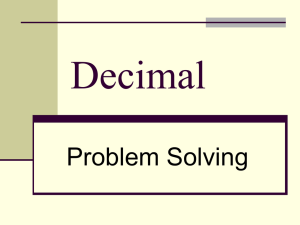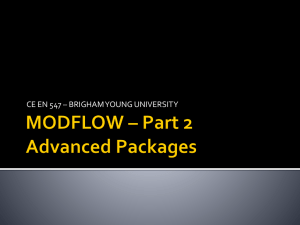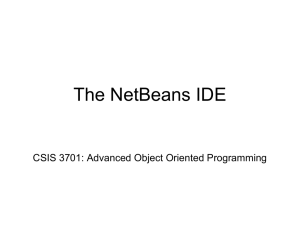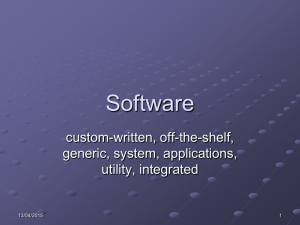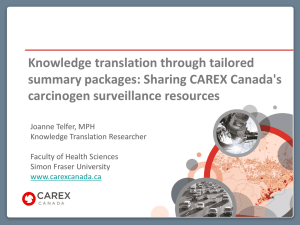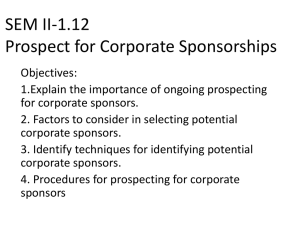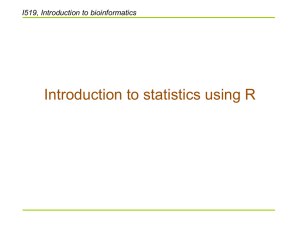MODFLOW - Aquaveo
advertisement
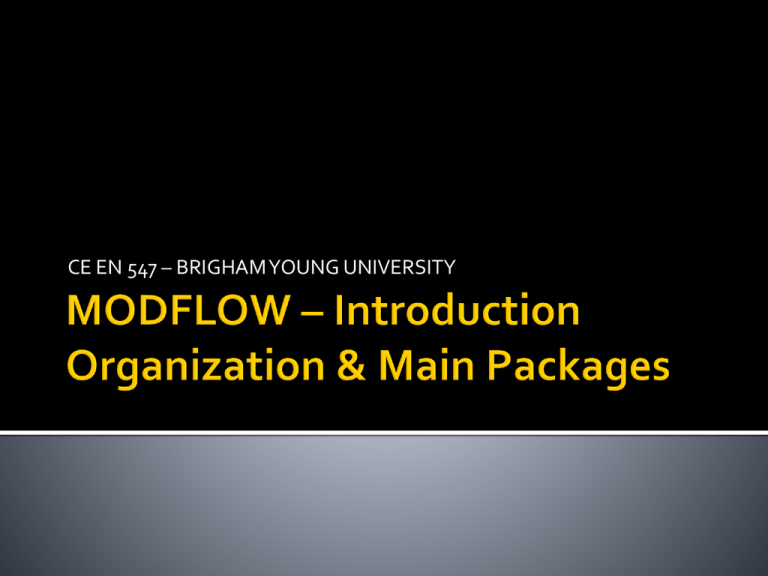
CE EN 547 – BRIGHAM YOUNG UNIVERSITY Developed by McDonald & Harbaugh of the USGS, 1983 Public Domain Most widely used groundwater model Steady state or transient saturated flow Latest version is MODFLOW 2005 GMS uses MODFLOW 2000 version 3D Cartesian Grid Cell-Centered Orthogonal in xy Thickness varies in z h h h h K y y K xx K zz W Ss x x y y z z t where: Kxx, Kyy, Kzz h W Ss t = values of hyd. cond. along xyz axes = total head = Sources and sinks = Specific storage = time MODFLOW is divided into a series of processes & packages. Major tasks are organized as processes More specific tasks are performed by packages Each process may use one or more packages Spatial discretization # rows, cols, layers Top/bottom elevations Temporal discretization Stress periods Time steps Units Package Selection Formulation and solution of the ground water flow equation by the FD method Main part of MODFLOW code Includes Flow package (BCF, LPF, or HUF) Source/sink packages Solvers Observation Process Observed heads and flows Used for calibration SEN Process Sensitivity analysis Calibration PES Process Automated parameter estimation (calibration) Required Packages Basic Global Output Control Flow Package (BCF, LPF, HUF) Solver (SIP, SSOR, PCG, GMG, etc.) List-Based Stress Packages River Stream-Aquifer Interaction Drain General Head Well Lake Changing Head Boundary Array-Based Stress Packages Recharge Evapotranspiration Other Horizontal Flow Barrier Starting Heads Array Provides initial set of heads for iterative solver. Defines head values at specified head cells IBOUND Array Array of integers Three possible values ▪ zero = inactive ▪ negative = specified head ▪ positive = variable head Cells outside problem domain are marked as inactive Three options Block-Centered Flow (BCF) Layer Property Flow (LPF) Hydrogeologic Unit Flow (HUF) One of the three packages must be used Original flow package Each layer is assigned a layer type Layer data are entered (depending on type) Horizontal K Bottom elevation Transmissivity Leakance etc. User enters Kh, Kv and storage terms for all layers, regardless of type Kv can be entered as directly or in terms of vertical anisotropy Horizontal anisotropy entered on a cell-by-cell basis Two layer types Confined Convertible Two options for inputting hydraulic properties: Array input ▪ one value per cell Material id approach ▪ Each cell is assigned a material id ▪ Properties are inherited from material Aquifer stratigraphy represented in a grid-independent fashion Equivalent Kh, Kv computed at runtime Top Thick 1 Thick 2 Thick 3 Thick 4 Assigned to individual cells Q can be steady state or transient Extraction well (neg Q) Injection well (pos Q) Assigned to individual cells Used to simulate Agricultural drains Springs Creek beds Required parameters Elevation Conductance Hijk CD Delev When the head is above the drain elevation: Q = CD (Hijk - Delev) or Q = CD (Delev - Hijk) for proper sign on Q CD Delev Hijk When the head is below the drain elevation: Q=0 Darcy’s Law: qk Dh A L where q = flow rate k = hydraulic conductivity Dh = head difference L = flow length A = gross cross-sectional area Darcy’s law can be rewritten as: q C Dh where C kA L The appropriate values for k, A, and L must be determined on a case-by-case basis One value assigned to each vertical column Represents recharge due to precipitation Can be steady state or transient Infiltration rate must be assigned in correct units [L/T] Rainfall Runoff Slope Soil type Land use Evapotranspiration Soil type Vegetation


